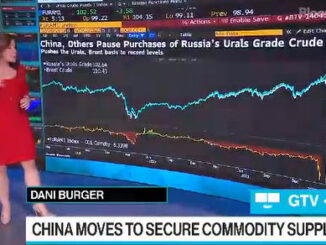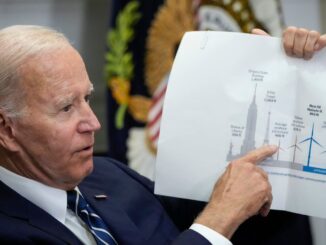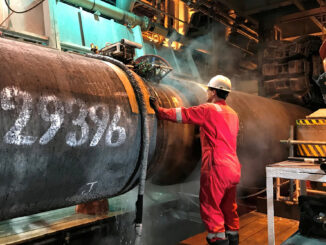
Ahead of President Biden’s State of the Union Message, I began to think about his job, and the real work of our infrastructure build. There is a narrow path to success. That path can be described in terms of risk, and vision: it has everything to do with the risks that we are being asked to take as a country, and it will work to the extent that we quickly make progress toward the promised land. Think about the infrastructure plan as a risk story – not in the setting out, but what happens if we reach 2030 (right around the corner in infrastructure years) without making the kind of extraordinary progress that we expect – and require.
President Biden’s job is difficult and tricky. He needs to create calm – given the kind of personal and group hell that we’ve been through, and are just beginning to deal with psychically — knowing to our core that our future (the environment, the threat from China, AI’s promise and danger, the prospect of another pandemic, heightened political polarization) is a forest of unknown risks and dangers. The threat story doesn’t get anyone elected, or reelected, but it is real and growing. Infrastructure investment is a first order path for moving the country forward for two reasons: it addresses each of the five significant risks above and it brings us all together – both for things that we get from the investment, and things that we give each other through what will be a transformation build.
Success will yield extraordinary benefits: it will recreate the country for the Fourth Industrial Revolution, and it will render risk into something that is manageable, and shapable. It will flip this generation’s risk into opportunities for the next generation.
Three areas pretty much tell the story. Warning: this is an adult story, involving both tremendous work from all of us and huge amounts of empathy from each of us, since the coming decade will be turbulent no matter what:
Risk 1 – Supply Chain Ecosystem. The infrastructure plan’s success turns on the success of growing the domestic (and here I include our friends in Canada and Mexico) supply chain. Without real success in bringing the supply chain home we won’t achieve the plan’s vision of job creation – we’ll either be paying 20-30% extra for local sourcing, or importing everything from 108 meter long rails for transit, to motors and valves for our water systems, to sensors for our smart projects, and windmill blades to produce renewable electrons. To put a fine point on it, as it stands now, if the Biden plan were to put $2.3 trillion into the infrastructure economy to build new projects, fully $1 trillion of that would flow directly out of the country – urgently buying what we no longer make here. That leakage would be precisely in rapidly diminishing confidence in infrastructure investments. Economists would write new studies on the effect of infrastructure investment as a stimulus for Chinese manufacturing.
Note: It gets worse – or better – depending on our success addressing the supply chain issue because lifecycle inputs into a project are seven times the initial capital cost! If we were to capture 100% of the infrastructure stimulus dollars, then factories around the U.S. would have $14 trillion in receivables stretching out over the next thirty years. Think about market creation for everyone from 3M MMM , to Emerson and Johnson Controls JCI , to the explosion in new firms that would be caused by the digitization and electrification of this potentially leading economic sector.
Risk 2 – Funding Reliability. No less critical than creating long-term jobs through supply chain capture is getting the funding architecture right – robust, reliable and world-class funding is critical to success. There is doubt, based on experience – as one respondent to a recent CG/LA survey stressed, without confidence: “The plan needs an ongoing funding source to really give me confidence.”
Two relevant facts: first, we have a fund sourcing standing by, in reserve, one of our greatest potential strengths – we are the world’s pension fund superpower, with $30 trillion in assets available; second, there are readily available avenues for driving private investment into infrastructure, nearly all of which are more efficient than the P3 model, and these channels have the potential to contribute as much as 50% of required funding, or over $1 trillion, to the infrastructure build over the next ten years.
These channels exist, but need to be energized – including long-term strategic concessions of our $33 trillion in aging assets; land/air value capture around highways, transit facilities and airports; and performance contracting, driving new technology into aging transit and water systems. Undergirding all of this should be the functional equivalent of the Eisenhower gasoline tax – either a direct tax on data, or a value added tax on companies as they sell infrastructure generated data to consumers. Companies like Xylem and Hannon-Armstrong would benefit tremendously from this explosion in the use of innovative funding tools.
Note: A big point is that much of the focus of the Biden Infrastructure Plan, including virtually everything having to do with electrification – from renewable energy, to high voltage transmission, to EV charging – is historically the realm of private investment.
Risk 3 – Project Pipeline/Supply. The two previous issues – supply chain revitalization and robust funding – are huge, but creating a strategic project pipeline, at the local and national level, may be even more important. Our regulatory framework is so complex and dysfunctional that the supply of buildable projects is extremely limited – even those projects critical for greening the environment. A bridge project, as an example, that was approved at the end of the Obama Administration, will have to start the process all over again for the Biden Administration, and the priority offshore wind projects so strongly supported by the administration are in no way ready for action. It gets worse when you realize that the small number of fully approved projects that want to take advantage of new materials, new technology or different rights of way, will have to go back to the beginning of the regulatory line.
Two actions can address this issue: first, Congress can – and should – designate critical environmental, supply chain and national security projects as national priority projects, so that they can begin this year, or early next year; second, we need an approved methodology for quickly fast tracking projects in the above categories, creating a kind of regulatory triage system… Otherwise projects will not happen, people will lose confidence, we will panic and the risk monsters will grow stronger and stronger. If done right, this will bring our engineering/construction companies, from Aecom to Bechtel, and from Kiewit to Parsons, back to a global leadership role.
Tell the Story – The Crystal Clear Plan. Infrastructure investment is, I would argue, the critical leadership challenge of the Biden Administration. Given the nature of this challenge the story needs to be told differently, starting at the same starting point, it needs to chart progress explicitly for all of us toward the promised land.
Think about a vision – a vision is a story – that addresses not just what we get for ourselves (mobility, health, jobs) but what we give to the country in the form of world-class and smart public goods – goods like transit, clean water, really fast broadband and guaranteed great jobs for thirty years.
One last point, and a big one. This is also a story about the shifting role of government. Flip the focus, thread the needle, navigate the turbulent waters, and catalyze the real work of building a supply chain that works for Fourth Industrial Revolution infrastructure; engaging institutional investors – so, in point of fact, you and me – making us owners of smart public goods all around our country; and redesign our Nixon-era regulatory framework into something that facilitates the flow of projects so necessary if we – all of us together – are to reach the promised land.
Source: Forbes



